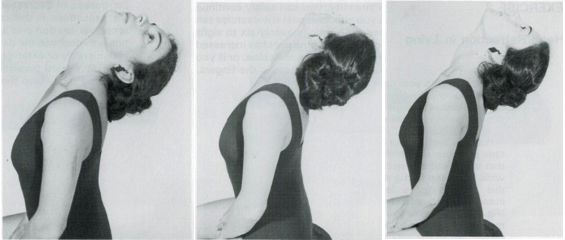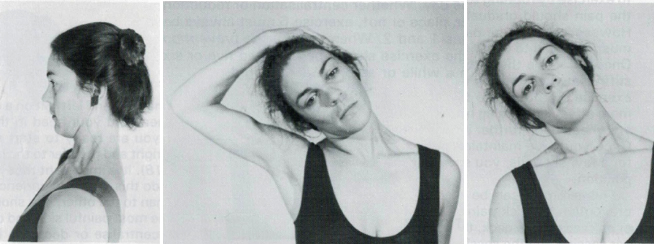Neck pain is such a common problem that it is estimated that 50% of people will have neck pain at some point in their lifetime. Chiropractors will perform a thorough history and physical examination to understand the cause of the neck pain and ensure they offer the most effective treatment for the individual. Mechanical neck pain is the most common type of neck pain, it occurs when certain movements or sustained postures strain the muscles in the neck and cause pain and decrease your range of motion. A multimodal approach has been proven to be most effective in treating neck pain. That is a combination of passive care that is administered by your chiropractor in the form of manual therapy and active care such as exercises and stretches to be done at home.
Common causes of neck pain
1. Sitting for prolonged periods
When we are upright and actively moving around, especially whilst walking briskly, we assume a fairly upright posture. The spine receives the maximum support possible whilst in an upright posture, the head is retracted and held directly over the vertebral column. As we sit and relax in a chair or the sofa, the muscles that support the neck also tend to relax and therefore are unable to maintain good posture and the neck protrudes forward. When this protruded head posture is maintained long enough it can cause overstretching of the ligaments which will cause pain with certain neck movements. Neck problems that develop this way are the consequence of poor posture which is one of the most common causes of neck pain.
2. Lying and resting
Postural stress in the lying position is the second most common cause of neck pain. If you wake up in the morning with neck pain or stiffness that was not present the night before going to bed, there is likely something wrong with your sleeping surface or the position in which you are sleeping. It is a relatively easy task to alter your sleeping surface however it is not so easy to change your sleeping position, as we can change positions whilst we’re asleep throughout the night without realizing.
3. Relaxing after vigorous activity
When you have finished some vigorous activity, whether it be exercise, playing sport or strenuous house work for example, it is important not to rest directly after and maintain a protruded head position or posture. Thoroughly exercises joint of the spine easily distort if left in an overstretched position for prolonged periods. It is usually common to blame the activity for the neck pain however it is this maintained and prolonged forward bending position of the neck that causes the pain.
4. Working in awkward positions or cramped spaces
Some jobs require us to be in awkward positions to be performed. They may require us to be sitting for prolonged hours or to be working in cramped spaces that can cause our head and neck to be in awkward static positions which are likely to cause over stretching of the neck muscles. If your neck problems are caused by awkward head positions at work then it is important to note that you may not be able to prevent the pain just by regularly assuming correct posture. In addition to postural correction, you must frequently interrupt the awkward position and over stretching of the muscles and ligaments.
Neck Exercises
The purpose of the neck exercises are to eliminate pain and to restore normal function of the spine. When you are exercising for pain relief you should only perform the exercises to the edge of the pain or just into the pain then release the pressure and start again from the initial position. When you are exercising for stiffness, the exercises can be performed with slight overpressure from the hands to apply the maximum amount of movement. It is important to recognize whether the exercise is right for you. Whilst you are performing the exercises, you may notice the pain moving towards the neck or spine where it was once felt down the arm or across the shoulders, this is referred to as centralisation of the pain and it is a good indicator that the exercises are being performed correctly and they are right for you.
1. Head retraction in sitting
- Move your head slowly backwards, tucking your chin in the whole time.
- You must remain looking straight ahead, you should not tilt the head backwards as in looking up, as demonstrated by the first image.
- Once you have maintained this position for a few seconds you can relax and you neck and head will automatically protrude again
- Each time this movement is performed, make sure the backward movement is done to the maximum possible degree

2. Neck extension in sitting
- This exercise should always follow exercise 1
- Hold your head in the retracted position
- Lift your chin up and tilt your head backwards as in looking up at the sky
- With your head tilted back as fa as possible, repeatedly turn your nose to the right and then to left of the midline whilst attempting to move the head further backwards
- Once you had done this for a few seconds, return head to the starting position and repeat again

3. Head retraction in lying
- Lie face up with your head at a free standing edge of the bed
- Push the back of your head into the mattress whilst pulling your chin in at the same time
- Once you have maintained this position for a few seconds you can relax then repeat
- Always ensure backward movement of the head and chin are done to the maximum degrees possible

4. Neck extension in lying
- This exercise should always follow exercise 3
- Lie face up on a bed but with the head off the edge
- Place you hand on the back on your head like in image 1
- Whilst supporting your head you shoulder lower it slowly towards the floor, now you can remove your hand
- Bring head and neck as far backwards as you can, trying to see as much of the floor as possible
- Whilst in this position you can repeatedly move your nose to the left and right of the midline whilst attempting to move head and neck further backwards
- Once you have reached the maximum amount of extension you should rest for about 30 seconds
- In order to return back to resting position, place hand on the back of your head, then assist head back to horizontal position

5. Side bending of the neck
- Do this exercise after repeating exercise 1 a few times
- Hold head in retracted position
- Bend your neck sideways like in image 2, do not allow the neck to turn
- Make sure your neck is always retracted like in image 1
- The exercise can be made more effective by using the hand like in image 3

6. Neck rotation
- Do this exercise after repeating exercise 1 a few times
- Hold head in retracted position
- Turn your head far to the right and then far to the left
- If you experience more pain towards one side, continue the exercise by turning towards the more painful side and on repetition the pain should decrease or centralise
- However if the pain does not decrease or centralise, continue to repeat the exercise on the less painful side, once the pain is equal on both sides then continue to rotate on both side

7. Neck flexion in sitting
- Sit on a chair and look straight ahead
- Drop your head forwards and let it rest with the chin as close as possible to the chest
- Place your hands behind your head and interlock your fingers, relax your arms so your elbows point down towards the floor
- In this position, the weight of the arms will put your head further and bring your chin closer to the chest
- Once you have maintained this position for a few seconds, return head to starting position

If you are experiencing ongoing neck pain and feel you need further treatment, our team of experience chiropractors can assist! Lakeside Chiropractic is located at 3/45 Central walk, Joondalup 6027, we have a variety of visitors from many surrounding suburbs, such as: Currambine, Sinagra, Tapping, Jindalee, Alkimos, Eglington, Connolly, Iluka, Burns Beach, Sorrento, Padbury, Hocking, Wanneroo and many others! If you would like to make an appointment of for further information feel free to contact us on 9300 0095 or you can visit our website www.lakesidechiro.com.au



